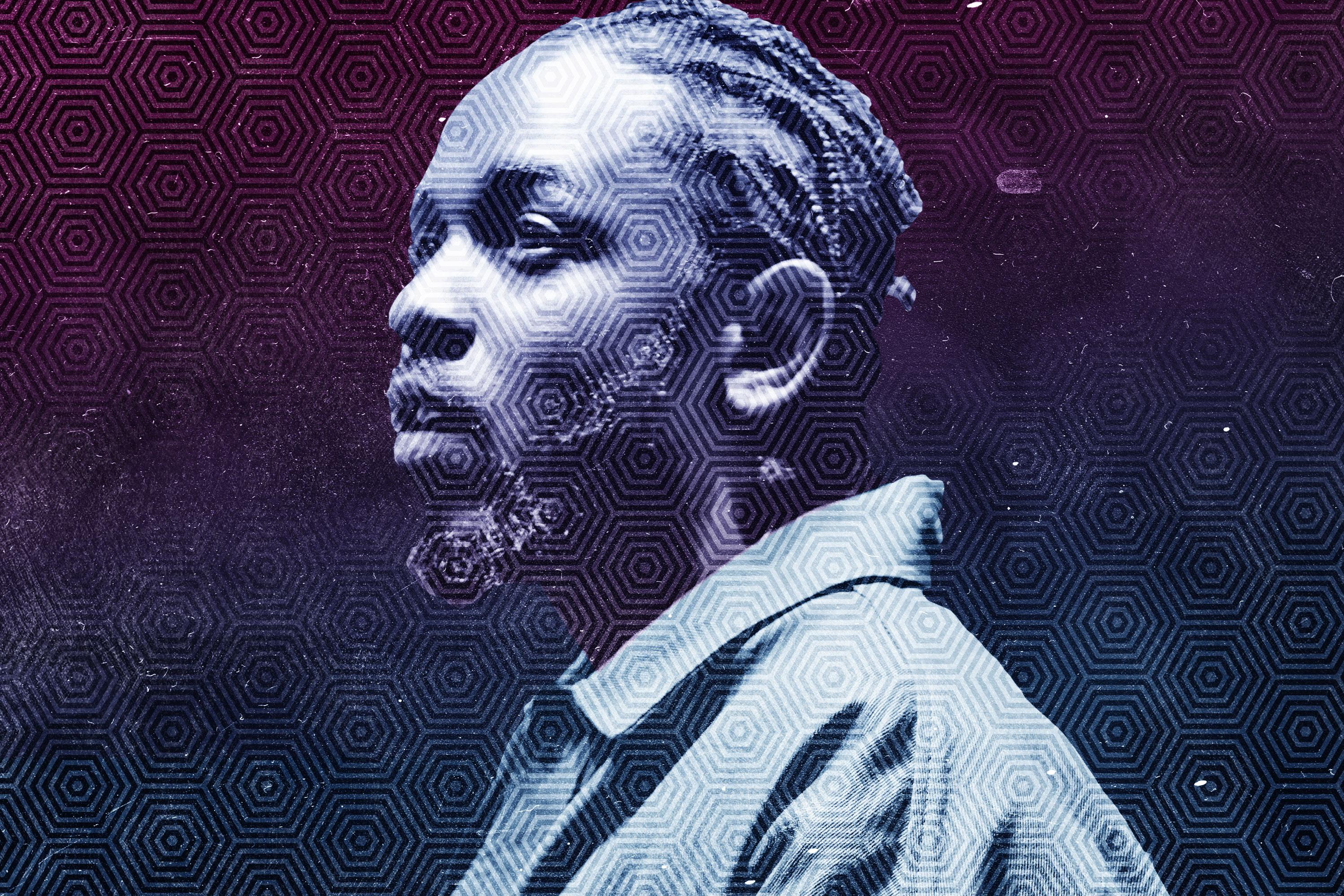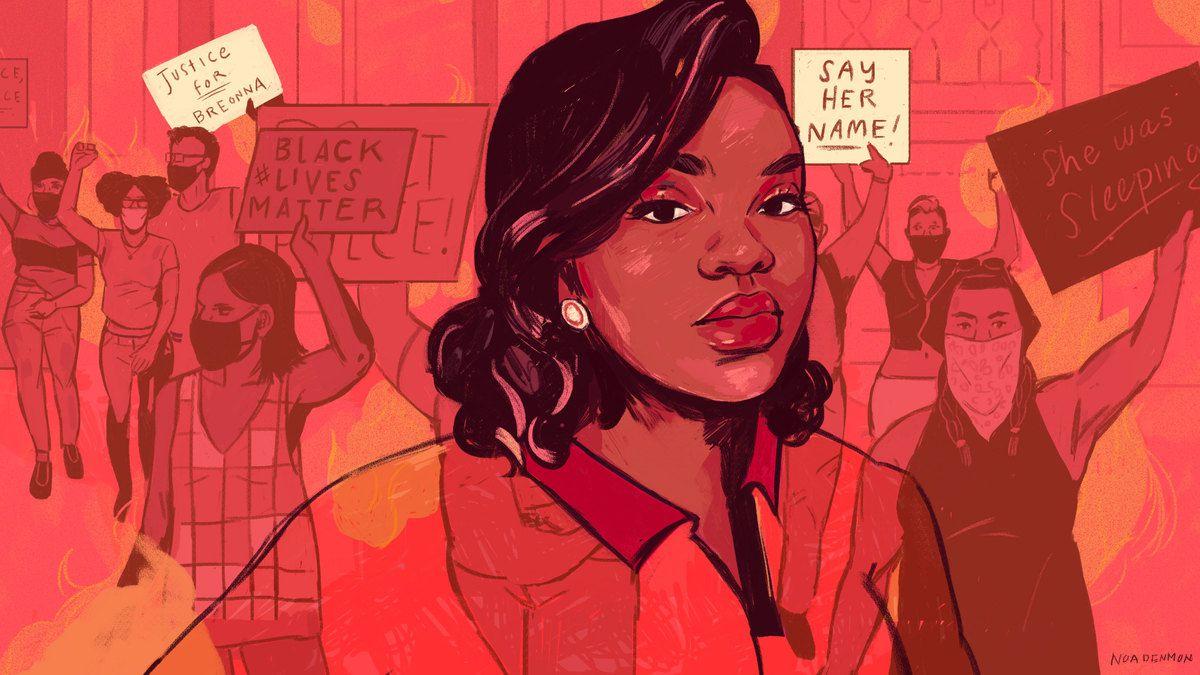
During the Middle Passage, Africans would sing to each other from inside slave freighters. A vessel could hold as many as 400 captive bodies, packed like spoons on top of one another. Slaves on any given boat spoke many different languages, which made communicating with the person next to them difficult, if not impossible. The cargo bays where they were jailed were breeding grounds for disease and death. In his autobiography, the ex-slave turned writer Olaudah Equiano described his time in the belly of a slave vessel:
I was soon put down under the decks, and there I received such a salutation in my nostrils as I had never experienced in my life; so that with the loathsomeness of the stench, and crying together, I became so sick and low that I was not able to eat, nor had I the least desire to taste any thing. I now wished for the last friend, Death, to relieve me.
Every Juneteenth I try to remember his testimony. When I read it aloud I think about the times in my childhood when I would lose sight of my mother in a crowd. I think about the pounding panic I’d feel when I realized I couldn’t find her, and the fear that would creep into my mind with every second we were apart. Then I think about those mothers and fathers and friends and children on boats like Equiano’s, locked up on top of one another in the dark. No idea what’s happening, no family; everything stripped from them. So what did they do? They sang to one another. Because how else could you express those feelings?
If they made it to America, slaves would sing while they worked. They did not sing constantly; there were moments in bondage when singing was not only inappropriate but a threat to one’s life. There was no singing in formal settings, unless ordered, and there was no singing in the presence of whites who did not condone it. But, in general, they sang quite often.
They would sing while they tilled muddy fields and harvested crops. They would sing by themselves and in groups. Their songs usually took on the subject of deliverance, and many verses were intensely biblical. One of the most famous of these songs went:
Sometimes I feel like a motherless child
Sometimes I feel like a motherless child
Sometimes I feel like a motherless child
A long way from home, a long way from home
When slaves sang, they did not do so for entertainment. They sang to speak.
A few months ago I visited my parents and stayed at my father’s home. He lives in the same townhouse that his mother and father bought after moving north during the Great Migration, and there are still bits and pieces of their previous lives tucked in cabinets and drawers throughout the house. During my stay, I found an old Mahalia Jackson record covered in dust, under a bookshelf in the living room. It was worn and scratched, and looked to have been played more times than I can imagine. I believe it was my grandfather’s.
Mahalia’s music was indebted to the slave songs. If the growth of Black American music could be broken down into a crude timeline, it would follow as this: From the slave songs grew gospel, ragtime, and blues, and from there grew rock ’n’ roll, soul, funk, R&B, techno, and rap—with jazz intertwined throughout. Mahalia sang “the gospel” as they would call it, but her music was deeper than any genre alone. Her songs spoke to the souls of a people trapped beneath the oppressive weight of Jim Crow. She would even sing over the phone to Dr. Martin Luther King Jr. to help him fall asleep during his most stressful stretches of protests. I imagine that’s why my grandfather listened to her, because she touched him deep inside, where no one else could reach.
The careers of musicians ranging from Billie Holiday, Sam Cooke, Aretha Franklin, and Stevie Wonder, to Janet Jackson, Public Enemy, Tupac, and Beyoncé are all, in their own way, built on this legacy. In the 2010s, no artist has been better able to center their music on a similar form of faith-infused Black resistance while still holding the gaze of the popular music world than the Compton-born rapper Kendrick Lamar. Since his major-label debut in 2012, Kendrick has been rap’s shadow ruler. He rarely tweets, and in years when he is not actively promoting an album it can feel like he has dropped off the face of the earth. But when Kendrick switches into full gear, his claim to rap’s crown is merely a matter of will. When he wants it, it is his.
Kendrick’s Good Kid, M.A.A.D City is the longest-charting rap record in the history of Billboard’s album chart. His second album, To Pimp a Butterfly, is still the highest-rated rap album on the review aggregator site Metacritic, and is described by some as “the best album of the 21st century.” Damn., his third and most recent LP, was the first album in rap history to have every song go platinum. A year after its release, Lamar became the first non-jazz or classical artist to win the Pulitzer Prize. In the weeks of unrest following the police killings of Breonna Taylor and George Floyd, his Grammy Award–winning single “Alright” has taken on a second life as a protest staple.
In all of his projects, Kendrick’s music is inseparable from the emotional realities of Black life in Compton. On a given album, his songs range from topics like police brutality, gun violence, and sexual assault, to mass incarceration, colorism, faith, and self-acceptance. He structures his rhymes into dense tapestries of rhythm and quick movement. His use of language is precise, but storytelling is what really makes him. On “Good Kid,” a standout track from his major-label debut, Kendrick raps from the receiving end of police victimization:
But what am I ’posed to do when the blinkin’ of red and blue
Flash from the top of your roof and your dog has to say woof
And you ask: “Lift up your shirt,” because you wonder if a tattoo
Of affiliation can make it a pleasure to put me through
Gang files, but that don’t matter because the matter is racial profile
I heard ’em chatter: “He’s prob’ly young, but I know that he’s down
Step on his neck as hard as your bullet-proof vest
He don’t mind, he know we’ll never respect”
The good kid, m.A.A.d city.
On “These Walls,” the fifth single from To Pimp a Butterfly, Kendrick raps about an incarcerated man and the isolation he feels while in prison:
If your walls could talk, they’d tell you it’s too late
Your destiny, accept it, your fate
Burn accessories and stash them on the yard
Take the recipe, the Bible, and God
Wall telling you that commissary is low
Race wars happening, no calling C.O.
No calling your mother to save you
Kendrick writes about abuse, love, faith, and companionship because he knows them. In “DNA,” the second track on Damn., he boasts “I got power, poison, pain, and joy inside my DNA,” the point of which is to say: His people contain multitudes. In moments like we’re living through now, when the violence that pervades all forms of Black life is unignorably obvious, his music is at its most compelling.
A few years ago, I became obsessed with African trees. In particular I was most awestruck by the baobab, which are indigenous to the island of Madagascar, but can be found all over the continent. In the West African nation of Senegal, baobabs are held in such high esteem that they are the country’s national symbol. They are unusually wide trees, with thick trunks and branches that spread out like open hands. Their bark ranges in color from pinkish-gray to copper, and their leaves are a deep green. Sometimes they are so wide that portions of their trunks have arch-like holes in them, big enough to stand in. Until the 1960s, some tribes in Senegal buried their griots—keepers of a community’s oral history—inside the trees to honor their memory.
Like the baobab, storytelling is an integral part of West African life, and the griot has long occupied a highly regarded social role. Griots can be poets, singers, musicians, or storytellers; the one constant is that they tell the history of their people. What gives them weight in society is not just the facts that they remember or the events that they can describe; it is the emotions that they capture, of a moment or time, and reflect back in the present. They are revered because they remember how their people felt.
That same ability is what gives Kendrick’s music its weight. When he’s at his best, he isn’t boasting about his verbal skills or taking shots at rival rappers; Kendrick’s music peaks when it reflects the thoughts and feelings of life in communities bound to a cycle of oppression and abuse. On “Sing About Me, I’m Dying of Thirst” the 10th track on Good Kid, M.A.A.D City, Lamar raps from the perspectives of three different characters. The first is the brother of a friend who was murdered in a gang fight at the end of the previous song. The brother admits that he’s calling Kendrick “in case I’m not here tomorrow” and proceeds to explain how his “mind” has been “distorted” by the necessities of gang life. He raps:
When I ride it’s a murderous rhythm
And outside became pitch black
A demon glued to my back, whispering “Get ’em!”
I got ’em and I ain’t give a fuck
That same mentality I told my brother not to duck
The brother thanks Kendrick for caring for his sibling, but before he can finish, he is silenced by three gunshots. The second character in the song is the sister of a young girl whose death and sexual assault Kendrick rapped about on his album Section 80. She objects to how Kendrick revealed the sordid details of her sister’s trauma-filled past and questions his sincerity in sharing her story:
And I’m exhausted, but fuck that “Sorry for your loss” shit
My sister died in vain, but what point are you tryna gain
If you can’t fit the pumps I walk in?
As she continues her vocals steadily fade and she is enveloped by the same system of sexual violence that killed her sister. At the end of the song Kendrick raps from his own perspective. One line in particular has always stood out to me. In it he says:
I count lives
All on these songs
Look at the weak and cry
Pray one day you’ll be strong
That commitment to documenting the truths of his community is what makes Kendrick’s music so powerful. It’s not just that he depicts their lives, it’s that he makes you feel their pain. And in doing so he forces the listener to empathize with their struggle.
The abolitionist Frederick Douglass was born into slavery and once joked that under American law he was considered a “thief” for “stealing” his own body. Douglass toiled on a plantation in Talbot County, Maryland, about 75 miles away from our nation’s capital, and his mother was separated from him at birth. His owner rented her out to a neighboring plantation. In his autobiography, Douglass spoke about his memory of the slave songs, and how they struck him to his core:
They were tones loud, long, and deep; they breathed the prayer and complaint of souls boiling over with the bitterest anguish. Every tone was a testimony against slavery, and a prayer to God for deliverance from chains.
In a country that devalues Black life, sometimes the simple act of conveying our hurt can be intensely radical. The first step toward freedom is always hearing the pain of those who aren’t free. And hearing Black folks isn’t just about listening to statistics on racial disparities or posting a black square on Instagram. It means registering our feelings and our thoughts. That’s what makes the #BlackLivesMatter movement and days like Juneteenth so profound, because they force white America to hear that we matter; that our pain matters, our love matters, and our history matters.
All that Kendrick Lamar can rap about is what he knows and what he’s seen. There are so many Black experiences and so many truths. Music that captures any of them is more than just entertainment; it is resistance. That’s why my grandfather listened to Mahalia, and Douglass recalled those slave songs from his childhood. It’s why Africans sang in the bellies of ships. To resist.


